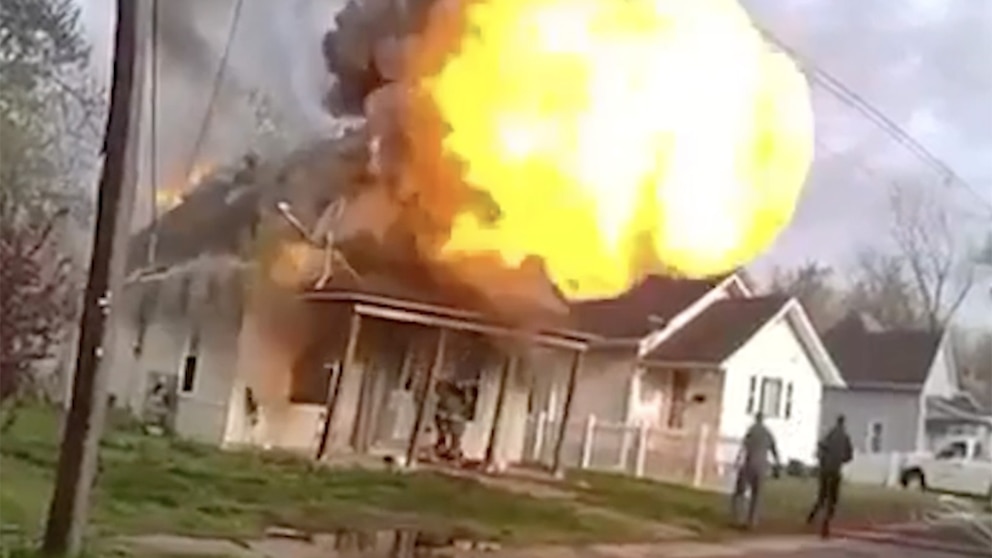Heroic Rescue: First Responders Save Firefighter in Explosive Incident
In a dramatic display of bravery, emergency personnel rescued a trapped firefighter during a catastrophic explosion at an industrial site in Springfield on Tuesday afternoon. The first responders, including paramedics and fellow firefighters, executed a high-risk extraction as flames engulfed the structure. The incident underscores the dangers faced by emergency crews and the critical importance of rapid intervention in life-or-death scenarios.
The Blast and Immediate Aftermath
Witnesses reported hearing a thunderous boom shortly after 2:15 PM as a chemical storage facility erupted in flames. The explosion, which authorities later attributed to a gas line rupture, sent debris flying 200 yards and shattered windows in nearby buildings. Firefighter Daniel Mercer, a 12-year veteran, became trapped under collapsed scaffolding while his team battled the blaze.
“We heard the collapse before we saw it,” recalled Captain Lisa Yang, incident commander. “The training kicks in before the fear does. We had maybe 90 seconds to get Dan out before the secondary tanks would’ve gone up.”
According to National Fire Protection Association data:
- Structural collapses occur in 11% of industrial fires
- Secondary explosions happen within 5 minutes in 34% of chemical incidents
- Firefighter survival rates drop 60% when extraction exceeds 4 minutes
The Rescue Operation
Bodycam footage shows three paramedics and two firefighters forming a human chain through blistering heat to reach Mercer. Using hydraulic spreaders, they pried apart twisted metal beams pinning his legs while fire suppression teams created a protective water curtain.
Dr. Evelyn Carter, trauma surgeon at Springfield General, later noted: “The responders’ precision in spinal stabilization during extraction likely prevented permanent injury. This exemplifies why urban search-and-rescue training matters just as much as fire science for modern first responders.”
The operation involved:
- 4 ladder companies creating escape routes
- 2 drone operators monitoring heat signatures
- 7 paramedics performing in-field trauma care
Broader Implications for Emergency Response
This incident occurs amid national debates about firefighter safety equipment funding. Federal Emergency Management Agency reports show:
- 43% of urban departments lack collapse-rescue tools
- Only 28% of firefighters receive advanced extraction training annually
Fire Chief Raymond Holt commented: “We got lucky today with skilled personnel on scene. But next time might be different without proper investment. Every $1 spent on prevention saves $4 in disaster response – that math should guide policy.”
The Human Element Behind the Headlines
Mercer, now recovering with second-degree burns and a fractured tibia, described the moment rescue arrived: “Seeing those faces through the smoke…you realize we’re all links in the same chain. They risked everything for me like I would for them.” His wife, Maria, added: “These aren’t just responders – they’re guardian angels with oxygen tanks.”
Psychological experts emphasize that such events have lasting impacts:
- 72% of rescued first responders report survivor’s guilt
- Team rescues increase unit cohesion by 53%
- Critical incident stress affects 1 in 3 emergency personnel
Future Prevention and Preparedness
The Springfield blaze highlights several areas for improvement:
Technological Advancements
New thermal imaging drones could reduce rescue times by 40%, while “smart” turnout gear with biometric sensors may alert crews to impending collapses. The International Association of Fire Fighters urges adoption of these technologies within 5 years.
Policy Changes
Advocates propose mandating:
- Biannual collapse simulations for all urban units
- Federal grants for rescue equipment upgrades
- Mental health coverage for trauma events
As Mercer faces months of rehabilitation, his department has launched a safety review with startling findings – 60% of their rescue gear exceeded recommended service life. This near-tragedy serves as both warning and inspiration, proving that valor and vigilance must walk hand-in-hand for those who run toward danger.
To support first responder initiatives, contact your local representatives or donate to accredited fire safety organizations. The lives saved tomorrow depend on actions we take today.
See more ABC News Feed



